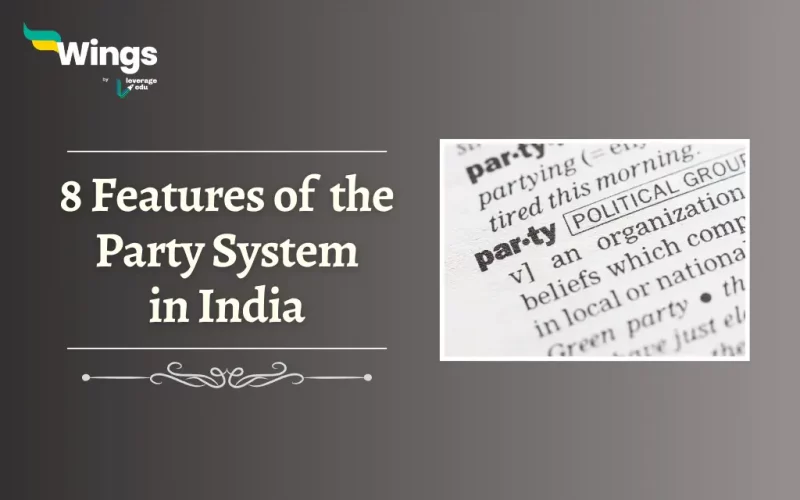The Party system in India reflects our country’s diverse political scenario along with the Political Parties. There is a Multi-Party system at its core and India has a range of political entities ranging from National giants to Regional powerhouses. Furthermore, this complexity is further highlighted by the existence of National and State-level parties, each with distinct ideologies and agendas. Moreover, Coalition politics often takes centre stage, hence shaping governance and policy-making. Additionally, India’s Electoral history has vibrant competition, with parties using diverse voter bases through ideologies, caste affiliations, and regional interests. Read on to learn more about the 8 Features of Party System in India.
1. One-Dominant Party System
The Congress party has always dominated India’s political affinity despite a Multi-Party system.
- This led to it being termed a ‘one-party dominance system’ by analyst Rajni Kothari.
- However, this began to change in 1967 with the rise of Regional and National parties like Janata (1977), Janata Dal (1989), and the BJP (1991), thus bringing in a competitive Multi-party era.
2. Multi-Party System
India’s vast size, diverse society, Universal Adult Franchise, unique political processes, and other factors have led to the emergence of many Political Parties.
- Moreover, India has the largest number of political parties globally.
- Indian ideologies range from left-wing to centrist, right-wing to communal and non-communal parties.
- Additionally, this variety results in regularly hung Parliaments, Assemblies, and Coalition governments.
3. Personality Cult
There are many cases where Political Parties in India revolve around a dominant leader that overshadows the Party’s ideology. These leaders often define the Party more than its official manifesto. However, this leads to a focus on political personalities rather than actual party principles.
4. Lack of Clear Ideology
In addition, there are numerous Parties in India with different ideologies.
- Moreover, they are at times ideologically similar and have a close similarity in their policies and programs.
- Additionally, almost every Party supports Democracy, Secularism, Socialism, and Gandhism.
- However, most parties which include those ideological perspectives are mainly driven by the pursuit of power.
- Consequently, Politics has shifted to be more issue-based rather than driven by ideology, and pragmatism has been replaced by commitment to principles.
5. Based on Traditional Factors
Western countries’ Political Parties are usually based on socio-economic and political agendas. On the other hand, many Indian parties form around religious, caste, linguistic, and cultural lines, therefore frequently encouraging communal interests at the cost of the public good.
6. Factions and Defections
In India, Political Parties have seen significant factionalism, defections, splits, mergers, fragmentation, and polarization.
- The pursuit of power and material gains usually makes politicians switch parties or form new ones.
- Furthermore, defections became more common after the Fourth General Elections in 1967.
- Thus, leading to political instability both at the National and State levels and resulting in party disintegration.
Also Read: Anti Defection Law (10th Schedule): Role of Speaker, Rules
7. Emergence of Regional Parties
There are many Regional parties that have gained prominence in India’s political biome whether it comes to Regional to National significance. However, initially confined to local politics, they now govern various States and have an important part in National politics, particularly due to Coalition governments at the Centre.
8. Lack of Effective Opposition
An effective Opposition is important for a successful parliamentary Democracy.
- The Opposition keeps a check on the Autocratic inclinations of the Ruling Party and offers an alternative Government.
- However, since the First General Elections, a strong, organized, and viable National Opposition has rarely emerged.
- Moreover, Opposition Parties lack unity and thus usually have clashing views against the Ruling party.
- Therefore, this failure to cooperate has diverted their Constructive role in Governance and Nation-building processes.
Related Blogs
Lastly, we hope you liked our blog and gained an understanding of the 8 Features of Party System in India. Moreover, you may even read more blogs and empower yourself with knowledge regarding Civics and Polity!
 One app for all your study abroad needs
One app for all your study abroad needs













